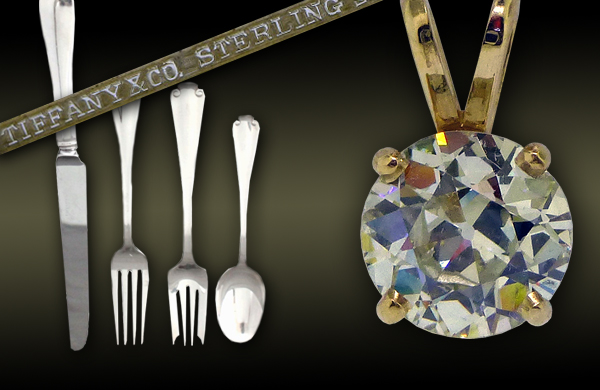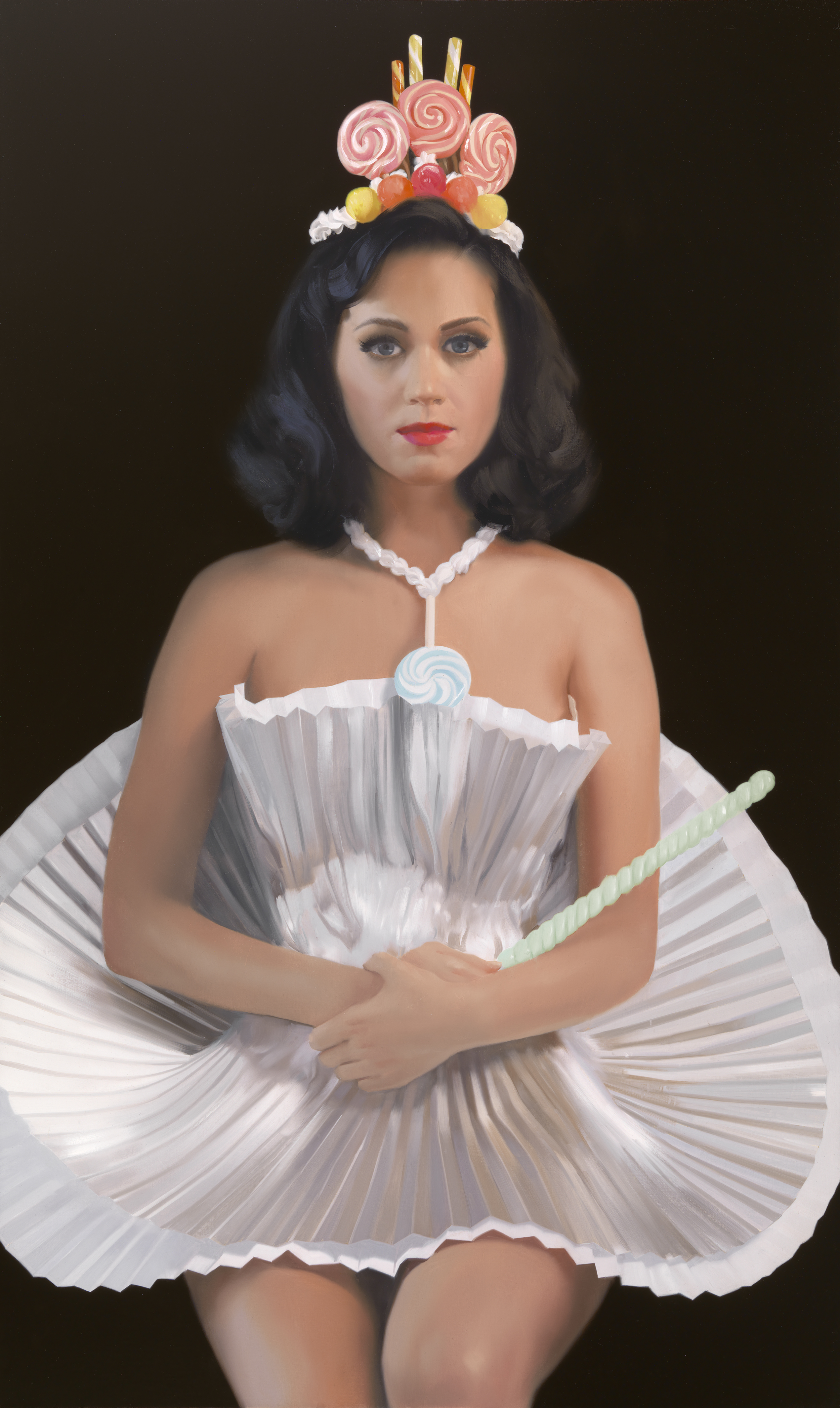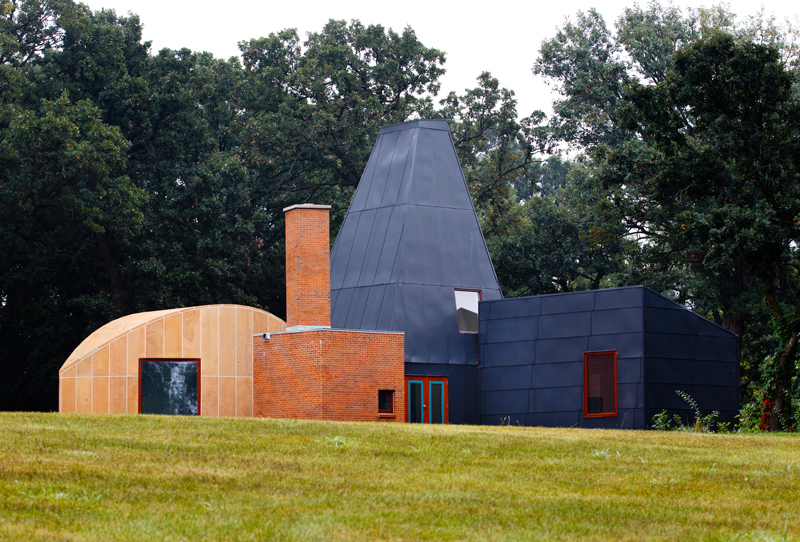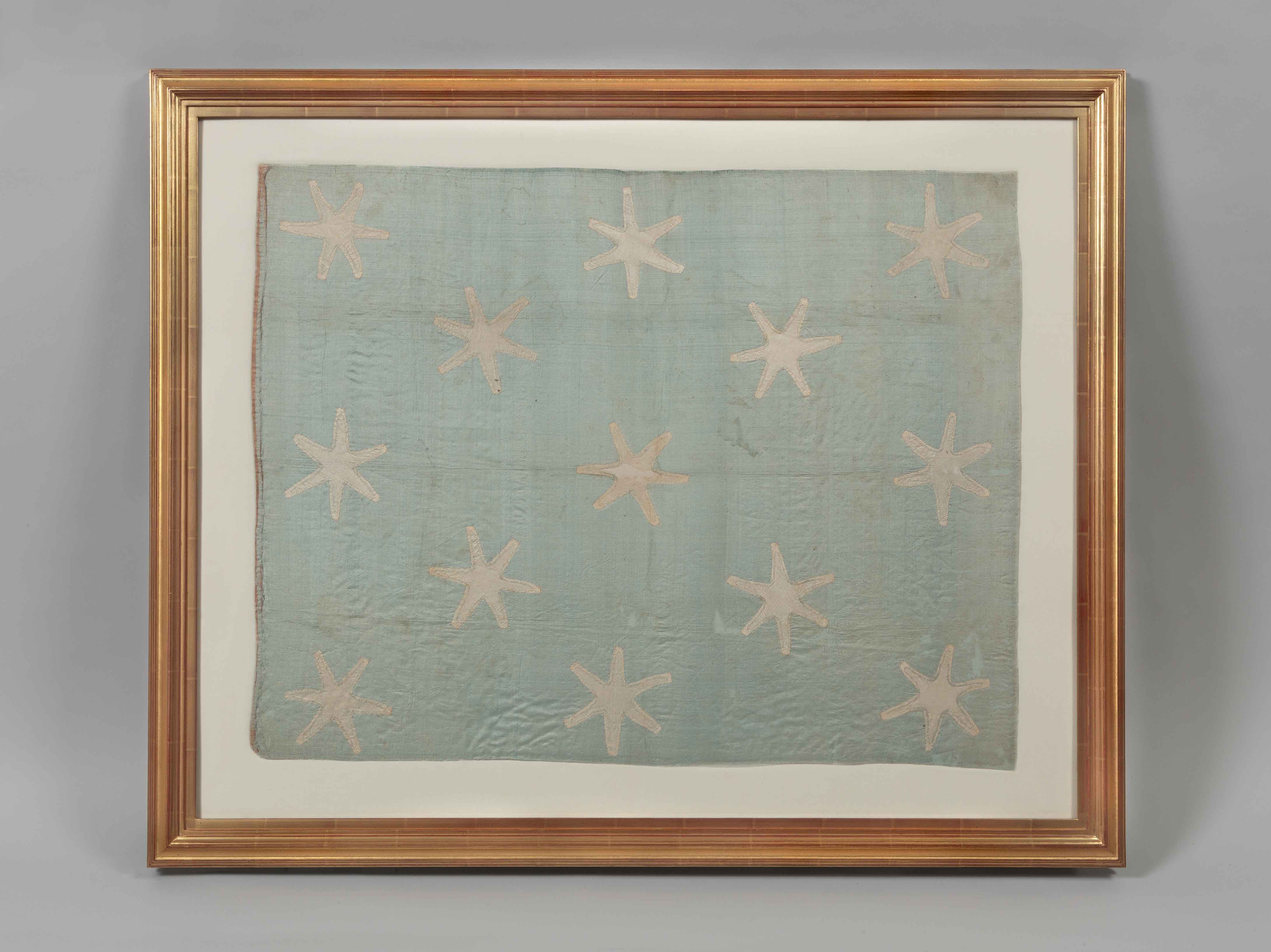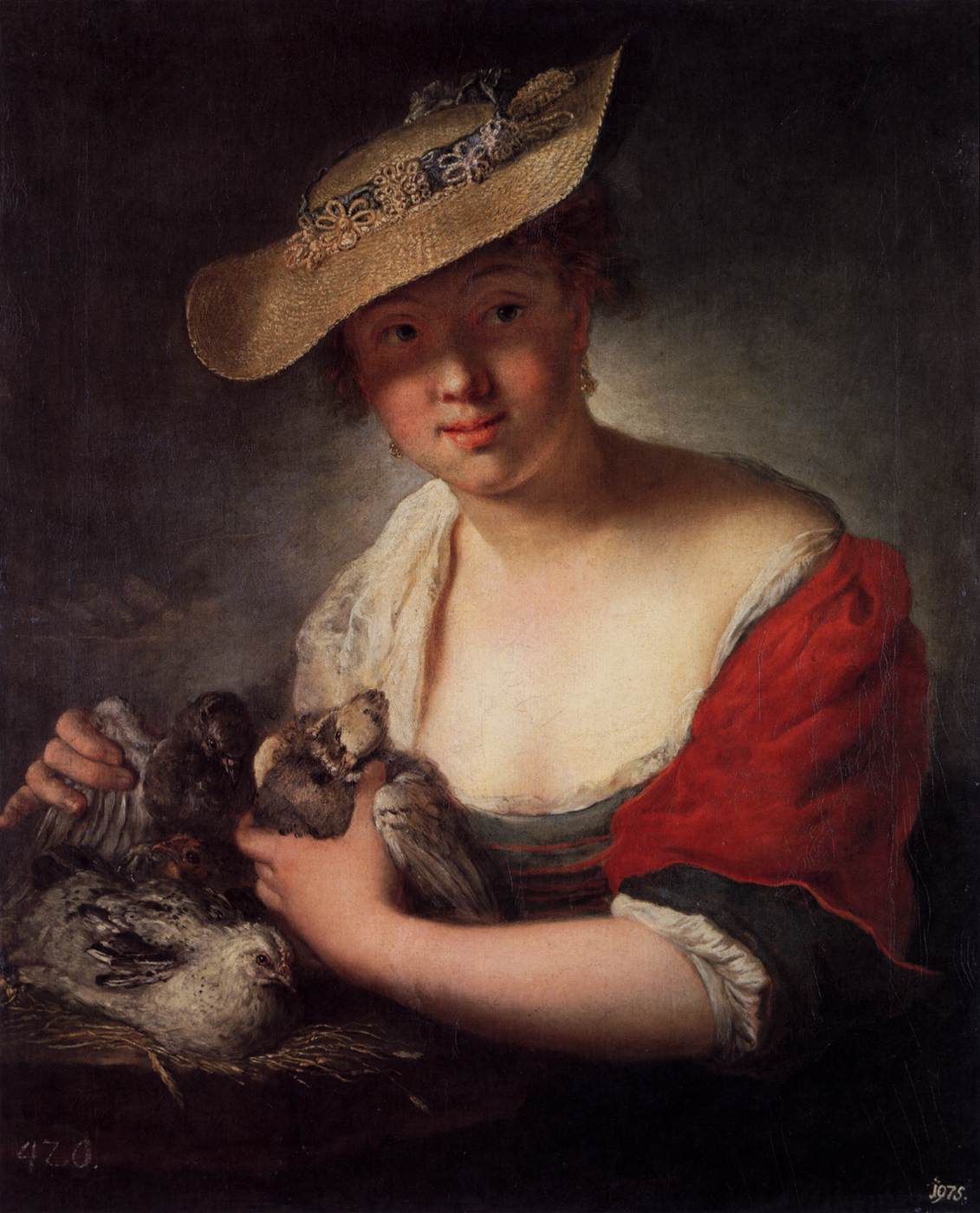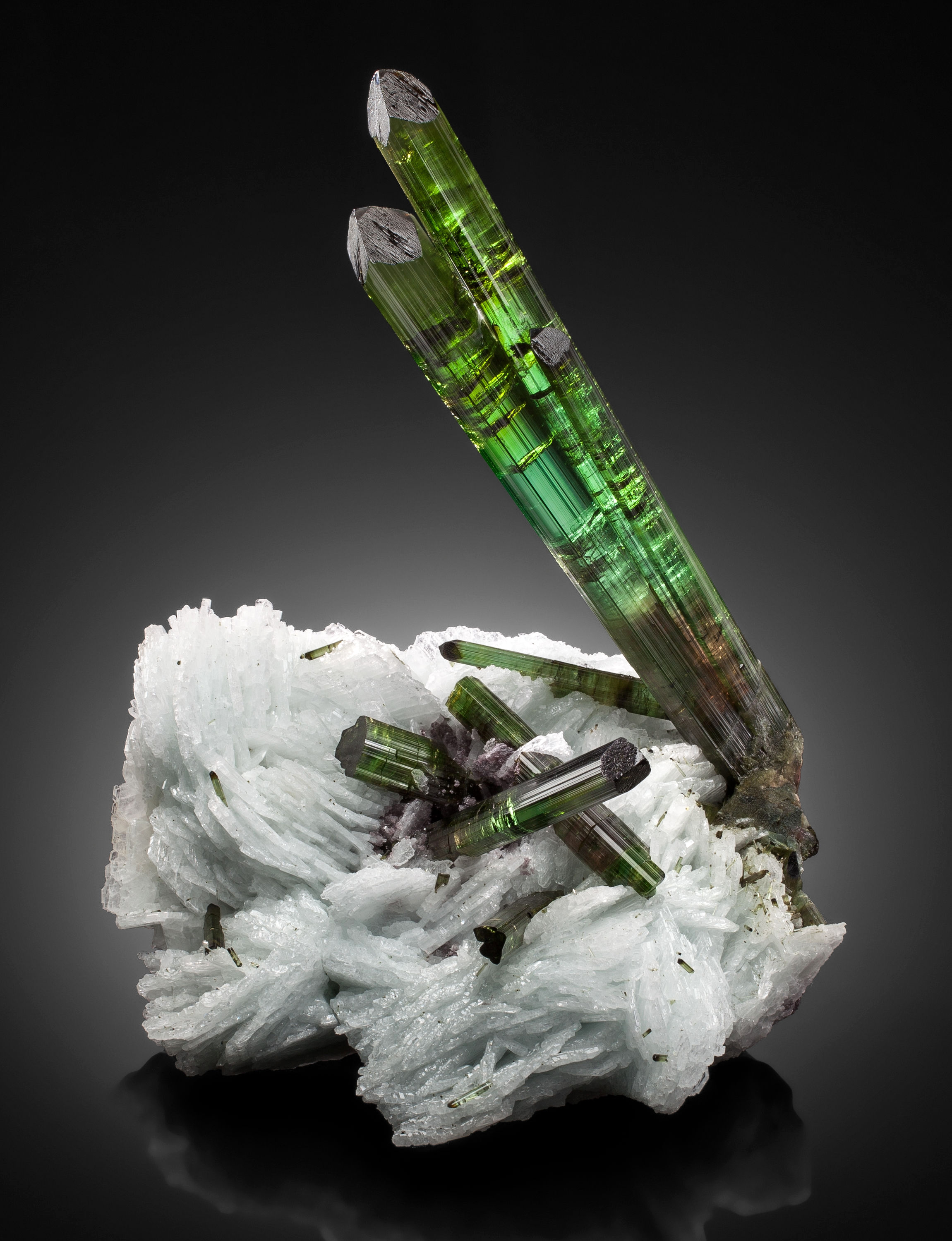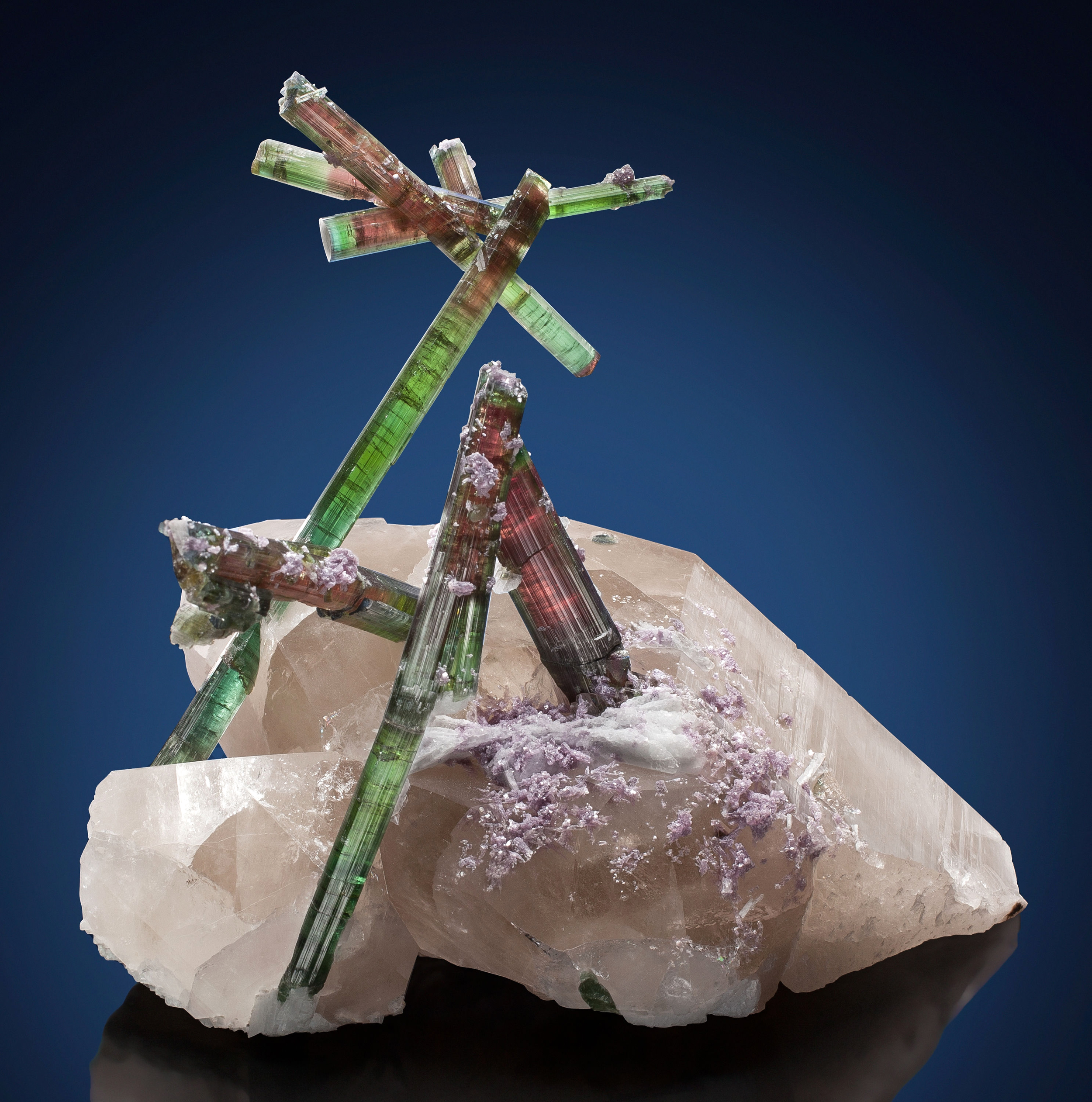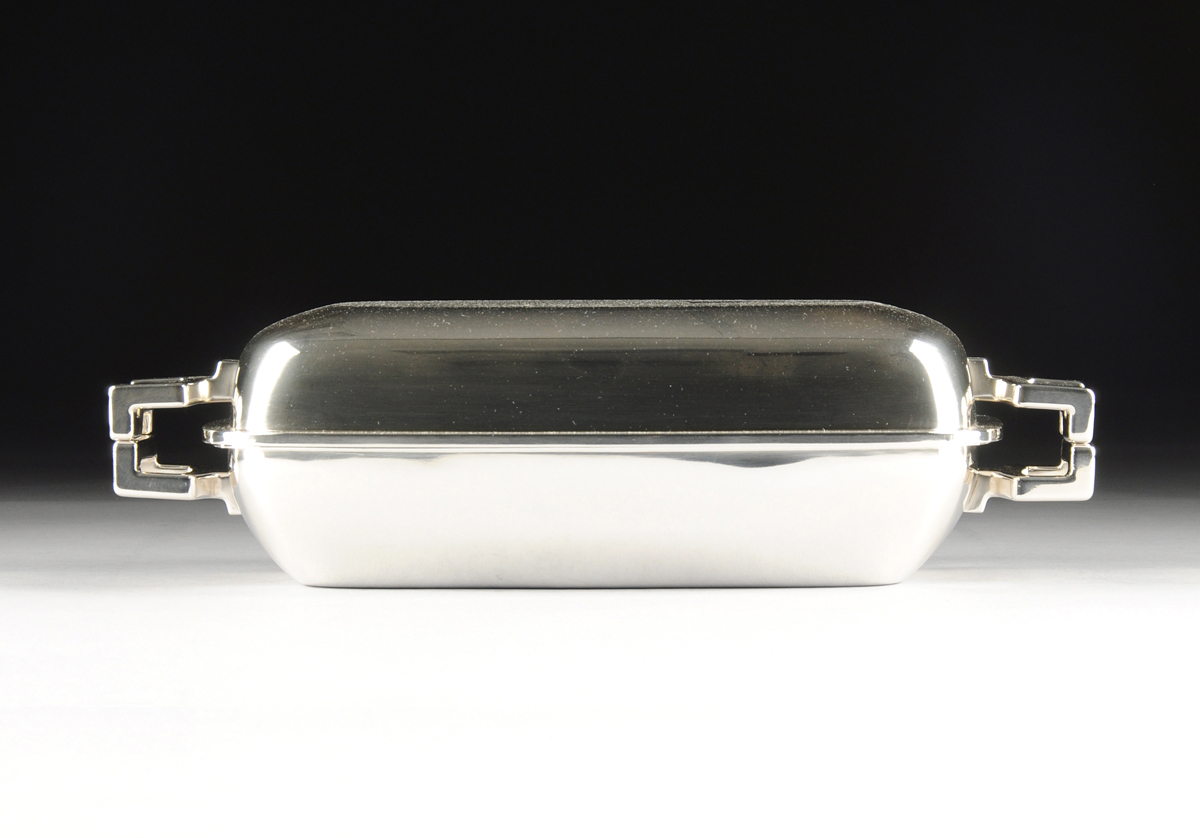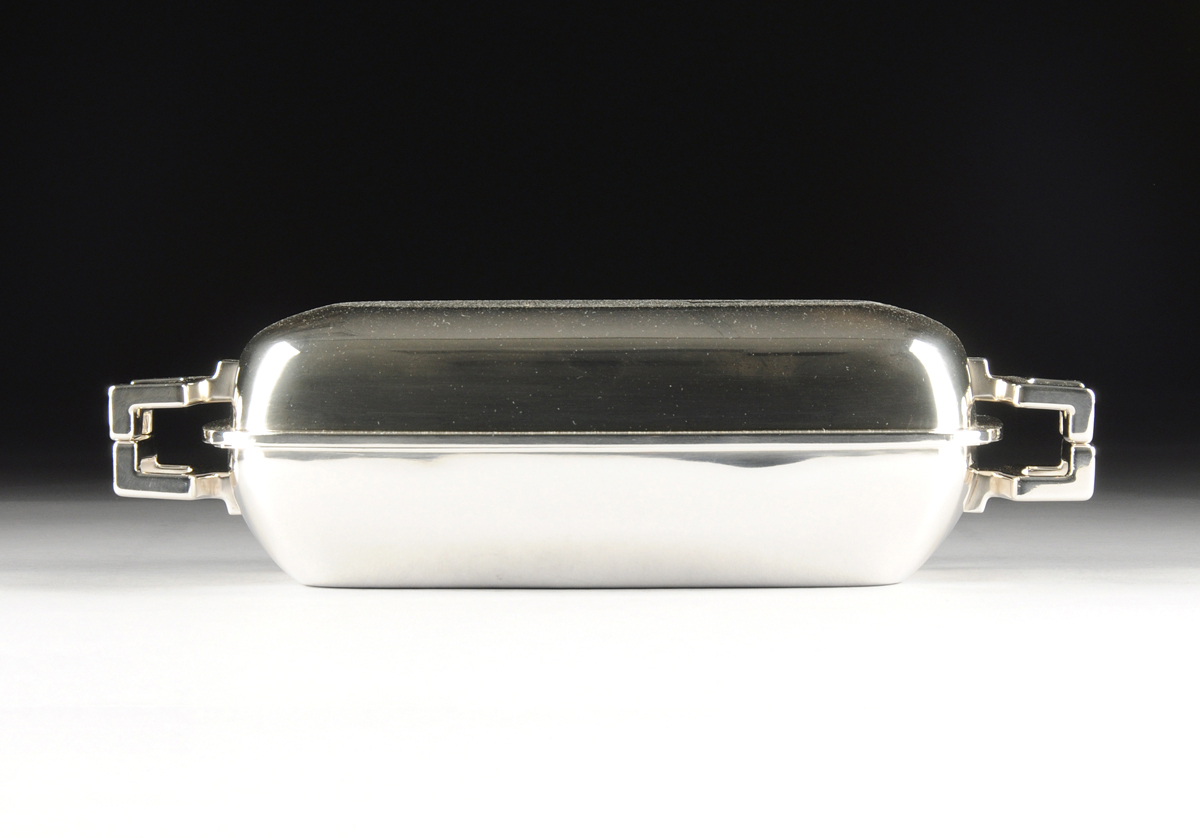
SARZANA, Italy – The internationally renowned auction house Czerny’s, based in Sarzana in Liguria, Italy, is the only auction house in the world dedicated exclusively to fine antique arms and armor. On June 6, Czerny’s will present a major sale specifically focused on their specialty. Buyers from around the world will be able to bid absentee or live via the Internet through LiveAuctioneers.com.
Among the top highlights is Lot 665 (shown above in full and below in closeup), a magnificent and highly important Japanese suit of armor which is estimated at €90,000 to €120,000.
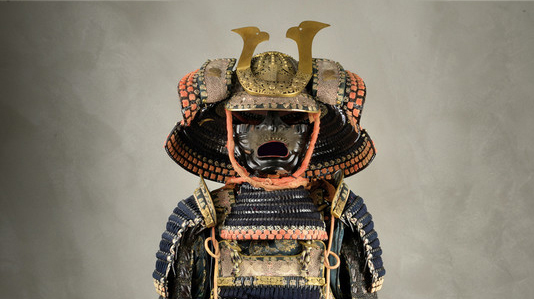
Lot 293 is an Oriental dagger, entirely glazed, estimated at €5,000 to €6,500.
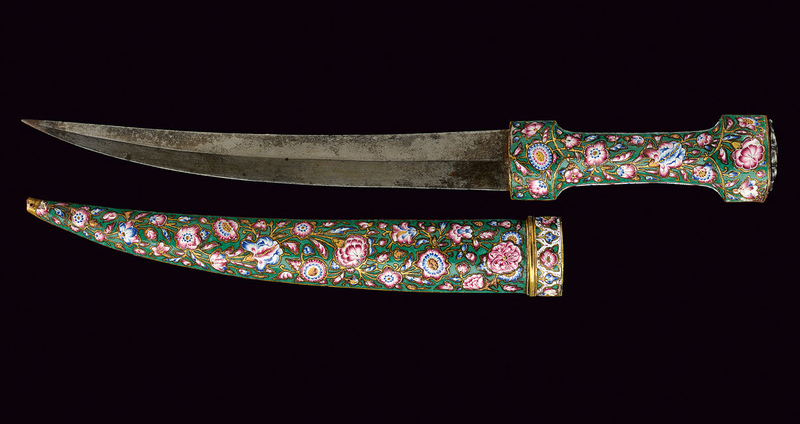
Lot 550, a German crossbow, dates to circa 1550 A.D. It is expected to make €14,000 to €16,000 in Czerny’s June 6 auction.
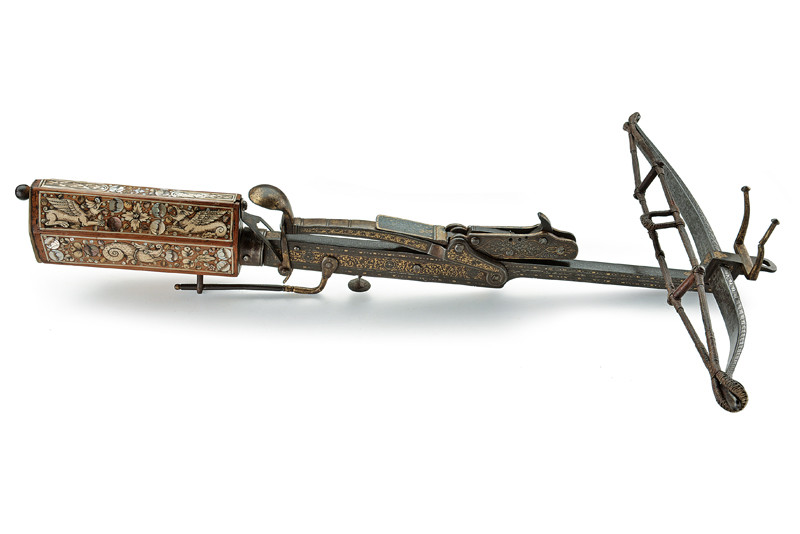
This outstanding Chinese rifle is entered in the auction with a €7,000 to €9,000 estimate.
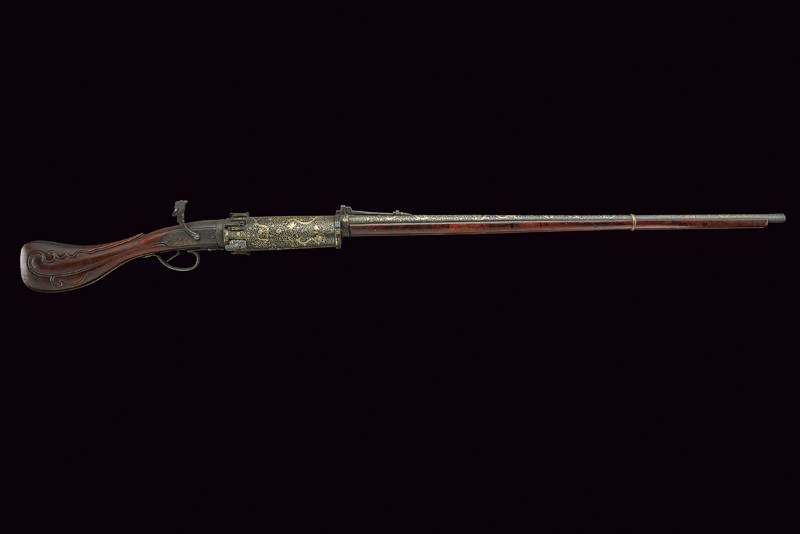
Not only are Czerny’s auctions a trusted source for top-quality antique arms and armor, they’re also a place where collectors can educate themselves by reading the catalog descriptions and studying the images. But there’s no education that can trump speaking with the masters of the collecting category itself, so Auction Central News interviewed Czerny’s founder, German-born Michael G. Czerny. Here is the transcript of the conversation between Mr. Czerny and ACN’s Italy-based reporter Silvia-Anna Barrila:
Which regions of the world are most active in the market for ancient arms?
Great Britain, the United States, France, Germany, Italy, and Switzerland. Other auction houses that deal in this sector are Christie’s, Sotheby’s, Bonhams, and Fischer in Lucerne. Besides being the only auction house dedicated exclusively to antique arms and armor, we also conduct the most auctions per year.
How many?
Each year we hold four regular auctions and two to four silent auctions dedicated to less-important pieces. Before, we used to hold only two auctions per year, but we increased the number to meet the collectors’ needs.
Who is the typical collector of ancient arms?
There are three types: First, there are the museums. For example, we have sold to the Metropolitan in New York, to The Royal Armories in London, and other museums in Asia and South America. Then, there are the traditional private collectors who have always loved and bought antique arms, either in general, or focusing on specific segments. For example, in Lucca there is a major collector specializing in Florentine guns and rifles ranging from the 17th century to the 19th century. Others collect only armor or helmets, or defensive arms, or antique arms, etc. Over the last 10-15 years, a new type of buyer has emerged: the investor. It is an interesting novelty that did not exist in 1980s-90s and up to 2000. For many years I have argued that antique arms are undervalued compared to other antiques.
Could you elaborate?
There are high-quality guns of the 17th century which are engraved and gilded but do not exceed €100,000, despite the skill and time required to create them. If you were to buy a painting of comparable quality, €100,000 would get you nothing. Yet the arms market has retained value and been far more resilient than other categories since the economic crisis [that begin in 2008]. When prices fell in all sectors of antiques, the prices for antique arms instead remained stable.
But it is a genre that appeals to a more conservative or traditional taste, isn’t it?
Not necessarily. Three or four years ago a major American interior architect bought arms from us for a total value of €400,000 to decorate the wall of a very modern apartment for one of his clients. The ancient and the modern combine very well. Also, the new wing of our headquarters is modern, with glass and gray and white colors and the ancient arms fit very well in it.
What is the average age of the collectors of ancient arms?
For a long time it was a hobby for people already of an advanced age. Now this is changing. I see so many young people and also women who advise their husbands. Thirty years ago, it would have never happened. This is because arms have two meanings: on the one hand, they are an expression of art and of the ability of a human to create a mechanism; on the other hand, they represent a war instrument, or a tool to kill, but we do not focus on this type of arms. We focus on antique arms that had symbolic or ceremonial meaning, or which were used as a tool to get food. Today this concept is more clear to the public, and this is why there is a revival of the antique arm.
Are you starting to see interest from countries where arms were not ordinarily being collected?
Yes, the Indians are starting to collect, and even the Chinese are beginning to get interested in the European arms. Before, they used to buy only Asian arms.
Conversely, Asian arms attract an international clientele, don’t they?
Absolutely. Among the Asian arms there is particular interest in Japanese productions, the ones of the samurai, which are of great quality. The Chinese arms are poorer than Japanese ones. Another interesting segment of this market is the arms from Indonesia, but the bulk is Japanese. In this auction, we have an armor of the last daimyō, a feudal chief of the mid-19th century. The estimate is €90,000 to €120,000, which is a high price for armor, but this is extremely important. Two years ago at Christie’s a similar but not so important armor changed hands for £103,000.
What are the most popular specialty categories?
There is demand for all specialty categories, but especially for Oriental arms: Turkish, Indian, Persian, and Indian-Persians. The Arabs themselves often buy them, even the royal families of Dubai and Doha. Among our customers there are many princes from that region. But also the Russians are interested in the Oriental arms. Prices range from €100 up to €70,000-80,000.
And what else?
Europeans like guns and rifles from the 17th-18th century. In this genre, the Italian arms are among the most beautiful of all — carved in a very elaborate way, with figures and animals. The prices for the arms of this type from the 17th to 19th century range from a few hundred euro to €200,000.
And armor?
Also in the field of armor, the Italian ones from the 16th to the early 17th century are among the most important in the world. Prices range from €5,000 for a very simple armor, for example those of the Thirty Years War, up to several million.
How do you define quality?
First of all, from the material and the degree of difficulty in working it. For example, iron is more difficult to carve than silver, brass, copper or bronze. Then, from the quality of the engraving and the artist’s ability to work the material. For example, a Japanese blade is composed of hundreds of small layers, one above the other, that make it much stronger and able to cut other simple blades, like the Chinese ones. Arms are an expression of the culture that created it: through arms we can understand the degree of evolution of a culture at a given point in time, their skills, and their ability to develop specific mechanisms. The arms from Africa, for example, are rather simple and functional; they are sometimes decorated, but are not sophisticated.
How important are factors like conditions and rarity?
As in all areas of collecting, they are both important factors, but they vary depending on the genre. For example, the state of conservation is very important for American arms. Given the United Statesi s a young nation, it is expected that their burnishing be perfect (“mint condition” in technical jargon), which would not be expected from the European arms, which can be three times older than the American ones.
What are the most important lots at auction on June 6?
Besides the already mentioned Japanese armor (lot 665), we have two fantastic crossbows from 1550 from Germany, which at the time were very advanced weapons (lots 550 and 551); and a very rare, engraved and gilded charger for a crossbow (lot 553). Then, we have two armors which are rare to find in such a complete state (lots 732 and 733). There’s a complete collection of Oriental arms (lot 1-103), followed by a collection of hunting arms (Lot 104-121). There is a very special dagger (lot 154) and two other Eastern daggers, one ow which is entirely glazed (lot 293), and one which has a jade handle decorated with gold and rubies (lot 295). Finally there is a Russian shasqua, a very coveted type of sword (lot 277), and an exceptional Chinese rifle that I had never seen before (lot 656).
What would you suggest to buy on a budget?
I would look for a specific area such as the gunpowder flasks, which also women like very much because they are not actually arms. They are usually very elaborate and etched (for example, lots from 586 up to 609).
How did you come to open an auction house in Italy?
From 1981 to 1988 I worked as an auctioneer in Munich, then I moved to Italy where I worked as a consultant for museums and private collectors. In 1995, I opened my first auction house in Trento; in 1999 I moved to Sarzana.
Are there galleries devoted to ancient arms or one can only buy at auction?
There are also galleries or shops dedicated to arms, but not in Italy because here the law on antique arms is very restrictive.
Everywhere in the world, antique arms are part of the antique market, while here the law has not been changed since Fascism. Also, for antique arms one needs a shooting or hunting license, or a collector’s license. We fight a lot with bureaucracy, which is a shame because Italy was one of the most important producers of arms from the 15th to the 17th century, but many people are afraid to collect this part of our culture because even a sword of the 15th century must be reported to the police.
Even foreigners must obtain a gun license to buy in Italy?
No, but they have to get an export permit from the police and the Ministry of Culture because the export of all art objects more than 50 years old is limited. Also other countries have restrictions, but they are based on value. For example, in Germany the export limit applies to objects above €50,000 in value. Below this value it cannot be deemed a national treasure.
# # #
 View the fully illustrated catalog and register to bid absentee or live via the Internet as the sale is taking place by logging on to www.LiveAuctioneers.com.
View the fully illustrated catalog and register to bid absentee or live via the Internet as the sale is taking place by logging on to www.LiveAuctioneers.com.


